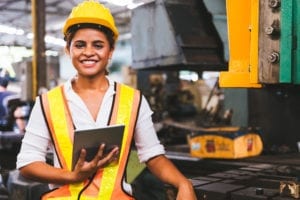How Connected Work Improves Safety Management in Industrial Environments
What's Inside:
Industrial Accidents and Humans are Inextricably Linked
Most industrial accidents can be traced back to human errors in two areas: setup and maintenance of equipment and infrastructure, and poor procedural adherence when operators are executing routine tasks. Additionally, every worker is unique, and that individuality can find its way into industrial environments, which leads to variance in quality.
Digitizing Standard Operating Procedures: An Essential First Step
Digital checklists offer clear benefits over paper-based procedures. They’re portable, searchable and, in many cases, interactive. But if the paper-based documentation and SOPs were vague or incomplete to begin with, there’s still the risk that workers mis-interpret the instructions or fail to complete critical safety steps.
Connected Work Holds the Key to Continuous Safety Improvement
Connected work methodologies and technologies don’t just digitize SOPs. They capture operator and system inputs during work execution; measure and analyze that data to identify trends; and provide clear insight to supervisors, managers and executives tasked with improving worker safety.
Addressing the Major Barriers to Safety Improvement
Connected work helps reduce the likelihood of accidents by making safety-related activities more consistent, collaborative and transparent across the enterprise. And the data captured at every moment enables industrial companies to proactively prevent, respond to and resolve incidents.
Leveraging Data to Improve Incident Investigation and Reporting
In even the best of environments, accidents occur. And when they do, safety management teams can leverage Connected Worker® by Parsable to quickly provide the proper care to those affected, assess what went wrong, and take immediate steps to ensure it doesn’t happen again.





